

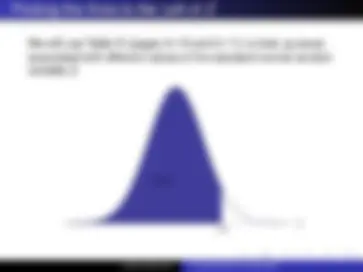
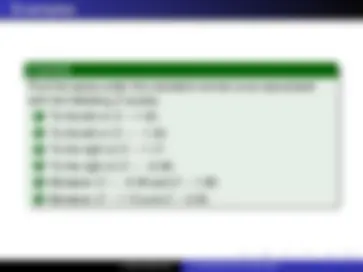
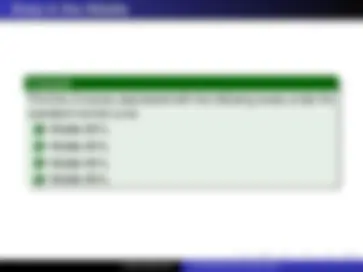
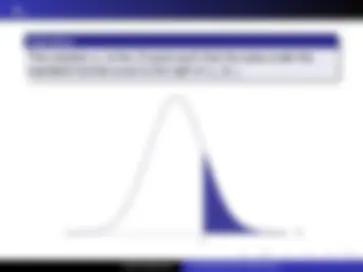
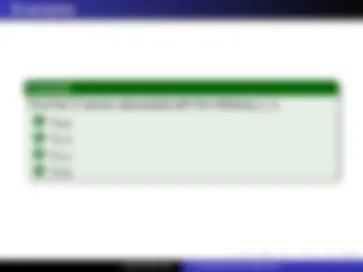



Study with the several resources on Docsity

Earn points by helping other students or get them with a premium plan


Prepare for your exams
Study with the several resources on Docsity

Earn points to download
Earn points by helping other students or get them with a premium plan
Community
Ask the community for help and clear up your study doubts
Discover the best universities in your country according to Docsity users
Free resources
Download our free guides on studying techniques, anxiety management strategies, and thesis advice from Docsity tutors
An overview of the standard normal distribution, including its properties, the empirical rule, and methods for finding areas under the curve and z-scores. It also includes examples and exercises for practice.
Typology: Assignments
1 / 13

This page cannot be seen from the preview
Don't miss anything!








MATH 130, Elements of Statistics I
J. Robert Buchanan
Department of Mathematics
Spring 2008
(^1) It is symmetric about its mean μ = 0 and has standard deviation σ = 1. (^2) The mean = mode = median, and thus the peak of the curve occurs at μ = 0. (^3) It has inflection points at μ − σ = −1 and μ + σ = 1. (^4) The area under the curve is 1. (^5) The area under the curve to the left of μ = 0 is 1/2 which is also the area under the curve to the right of μ = 0. (^6) The PDF approaches 0 but never reaches 0. (^7) The Empirical Rule applies.
We will use Table IV (pages A–10 and A–11) to look up areas associated with different values of the standard normal random variable Z.
1.65 Z
Example Find the areas under the standard normal curve associated with the following Z -scores. (^1) To the left of Z = 1 .43. (^2) To the left of Z = − 1 .34. (^3) To the right of Z = 1 .17. (^4) To the right of Z = − 0 .66. (^5) Between Z = − 0 .49 and Z = 1 .08. (^6) Between Z = 1 .13 and Z = 2 .05.
If we are given the area under the standard normal curve, we can search for the closest area found in Table IV and look up the Z -score corresponding to this area. Example Find the Z -scores associated with the following areas under the standard normal curve. (^1) Area to the left is 0.68. (^2) Area to the left is 0. 25 (^3) Area to the right is 0.72. (^4) Area to the right is 0.85.
Example Find the Z -scores associated with the following areas under the standard normal curve. (^1) Middle 80%. (^2) Middle 90%. (^3) Middle 95%. (^4) Middle 99%.
Example Find the Z -scores associated with the following z α’s. (^1) z 0. 20 (^2) z 0. 15 (^3) z 0. 10 (^4) z 0. 05
The area under the standard normal curve is the probability that Z lies in a particular interval. P ( a < Z < b ) represents the probability that a standard normal random variable is between a and b. P ( Z > a ) represents the probability that a standard normal random variable is greater than a. P ( Z < a ) represents the probability that a standard normal random variable is less than a. We will not distinguish between strict (<, >) and non-strict (≤, ≥) inequality.
Read Section 7.2. Pages 341-343: 5–49 odd